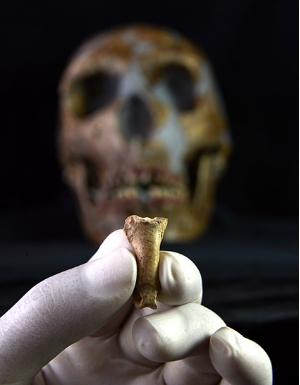
Don't take the Neanderthals to be 'know-nothings'. They used eagle talons as the first materials to make some chunky jewellery for themselves. It seemed to have been quite a fashion trend that spread around Southern Europe about 120,000 and 40,000 years ago. And now, these cosmetic bits of eagle talons were recently picked up in the Iberian Peninsula.
The scientists found the ornaments to be quite interesting, so an article published in the cover of the journal Science Advances described the discovery in the site of the cave Foradada in Calafell. The finding was headed by Antonio Rodríguez-Hidalgo, a scientist at the Institute of Evolution in Africa (IDEA) and a member of the probe team involved in an experiment related to the Prehistoric Studies and Research Seminar (SERP) of the University of Barcelona.
This bit of ornament has probably caught more eyes today than it did during its own times! Not because it looks beautiful today, but because it is a very modern piece of its kind, related to the Neanderthal period and the first one found in the Iberian Peninsula. These eagle talons are the most ancient ornamental elements in Europe, dating back even earlier than seashells that humans found in northern Africa.
Interestingly, this also expanded the geographical limits for these types of jewel pieces. It would be "the last necklace made by the Neanderthals," said Antonio Rodríguez-Hidalgo. "Neanderthals used eagle talons as symbolic elements, probably as necklace pendants, from the beginnings of the mid-Palaeolithic."
Researchers found in Cova Foradada some relics of bones that belonged to the Spanish Imperial Eagle (Aquila Adalberti) over 39,000 years ago. They displayed a few marks showing that the bone relics were used to take talons in order to make pendants of chains.
A few remains seem to be a portion of the left limb of a giant eagle. The marks, as well as the analogy from various prehistorical sites and ethnographic documents, show that the animal was not leveraged for consuming but for decorative and symbolic purposes.
These interesting findings put this in the châtelperronian culture, which is the standard for the last Neanderthals of Europe, also in sync with the moment when they got in touch with the African Homo sapiens and expanded from the Middle East. Maybe the eagle talons were used as ornaments, and might have been transmitted from the Neanderthals to humans today, who took it up in Europe.
This ornament brought about a transformation in the territorial map and represented a climb from Middle Palaeolithic to Upper Palaeolithic period 40,000 years ago. That was probably the point of interaction between Neanderthals and Homo sapiens sapiens.









